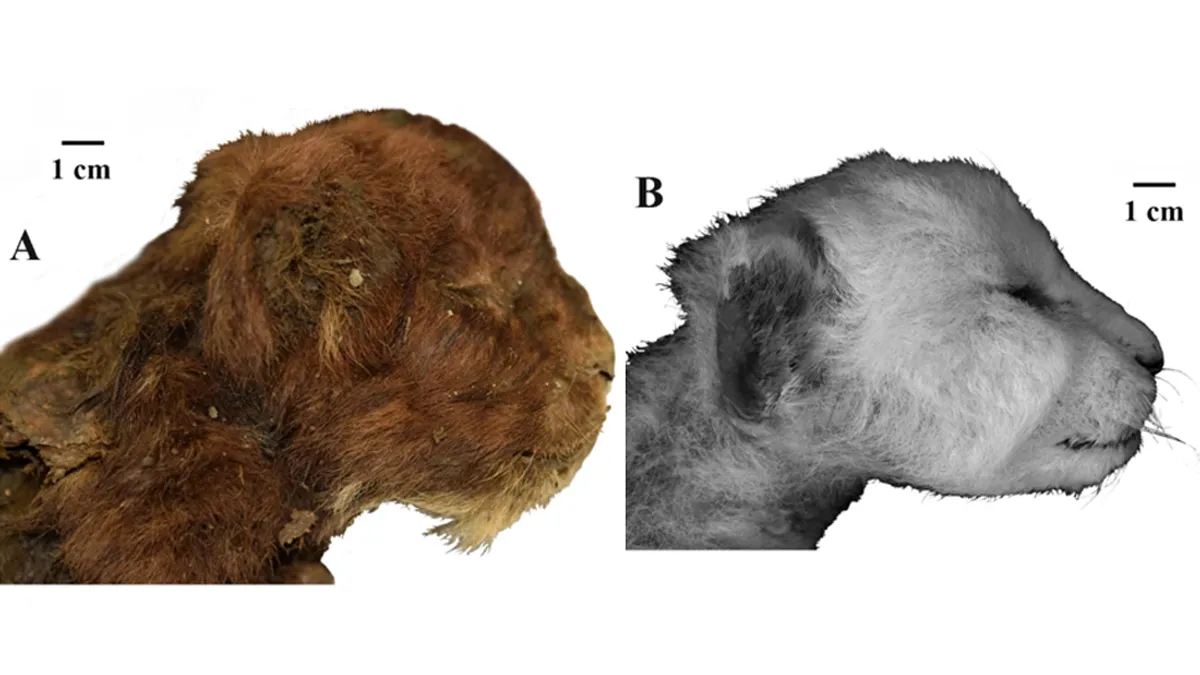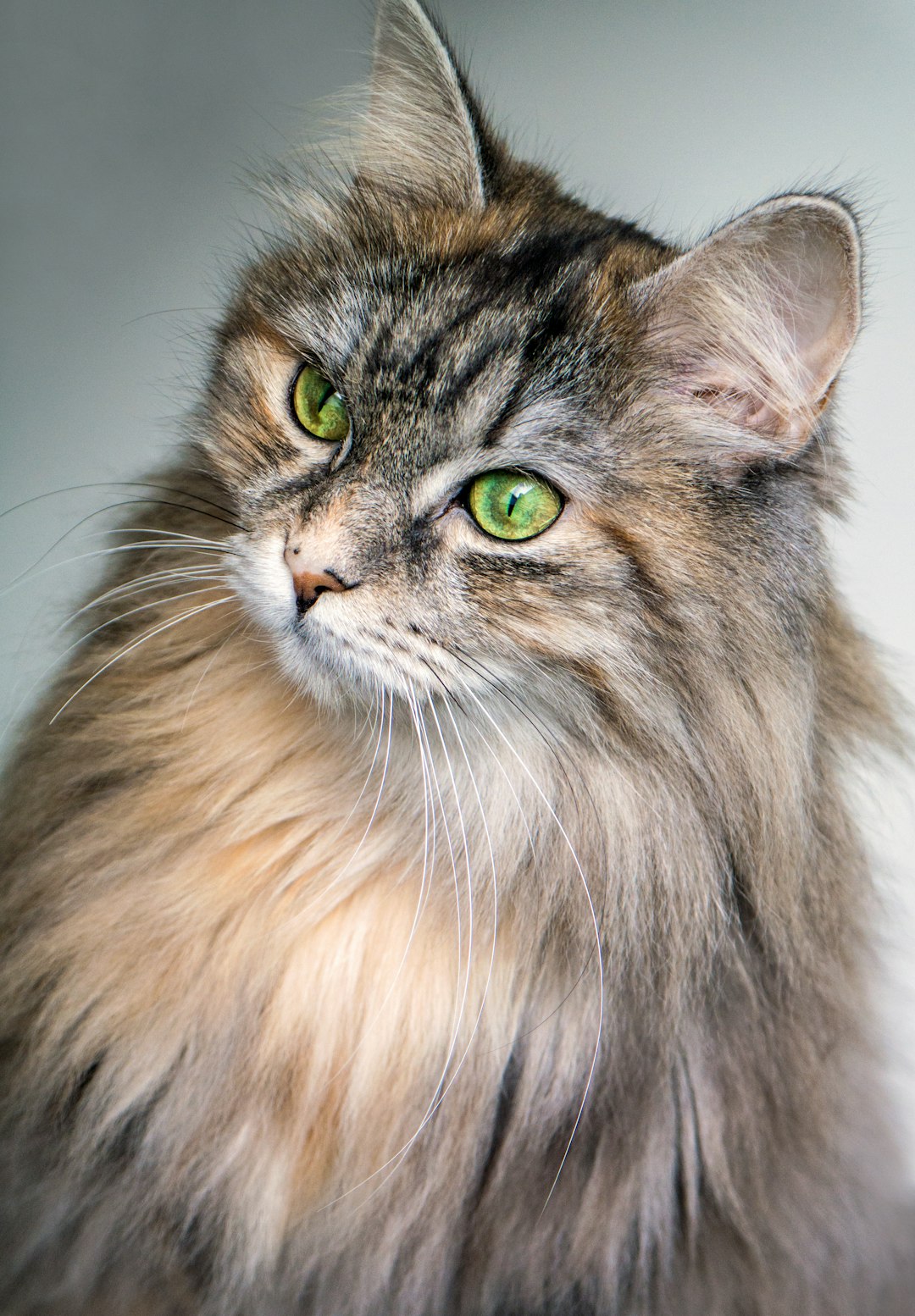The discovery of the Mummified Saber-Toothed Cat has unveiled fascinating insights into the life of this iconic prehistoric predator. Researchers have meticulously examined its preservation techniques, revealing the environmental conditions it endured during the Ice Age. By analyzing the anatomy and behavior of the specimen, scientists gain a deeper appreciation of its role in the ancient ecosystem. Additionally, genetic studies shed light on its evolutionary significance, helping us understand its place among other prehistoric carnivores. Overall, this remarkable find sparks curiosity and highlights the importance of continued research in unraveling the mysteries of our planet’s history.
Discovery of the Mummified Saber-Toothed Cat
The discovery of the Mummified Saber-Toothed Cat captivated both scientists and the public alike. This extraordinary find occurred in the remnants of a fossil-rich area, showcasing the delicate artistry of nature and time.
Key points to consider:
- Location: The specimen was unearthed in the permafrost of North America, particularly in areas rich in Ice Age fossils.
- Date: Researchers dated the mummified remains to approximately 10,000 years ago, coinciding with the late Pleistocene era.
- Condition: The exceptional preservation of the Mummified Saber-Toothed Cat allowed scientists to study its fur, skin, and even soft tissues, offering insights into its life and environment.
This remarkable find not only enhances our understanding of ancient ecosystems but also provides a unique glimpse into the behaviors and adaptations of the saber-toothed cat. With its well-preserved state, it serves as a crucial link to our planet’s prehistoric past, inspiring further explorations and discoveries.
Analyzing the Preservation Techniques
The Mummified Saber-Toothed Cat offers a fascinating glimpse into the past, thanks to its exceptional preservation methods. Let’s explore the techniques that contributed to this remarkable state:
Natural Mummification: Often, environmental conditions led to natural mummification. Cold, dry climates inhibit decay, allowing soft tissues to remain intact.
Desiccation: The absence of moisture played a crucial role in preservation. In arid settings, the tissues dried out, preventing bacterial activity and decomposition.
Burial Conditions: Rapid burial beneath sediments shielded remains from scavengers and elements. This protection ensures better preservation, as seen in the Mummified Saber-Toothed Cat.
Chemical Factors: Certain minerals in the soil may interact with organic material, enhancing preservation further. These chemicals help to stabilize the tissues over millennia.
Comparison of Preservation Techniques
| Technique | Description | Effectiveness |
|---|---|---|
| Natural Mummification | Environmental preservation without intervention | High |
| Desiccation | Dryness prevents decay | Moderate to High |
| Burial Conditions | Protection from elements and scavengers | Very High |
| Chemical Factors | Soil interactions aid in stabilizing tissues | Variable |
In summary, the Mummified Saber-Toothed Cat showcases various preservation techniques that not only protect its remains but also provide invaluable insights into the biological and ecological aspects of the Ice Age.
The Anatomy of the Saber-Toothed Cat
The Mummified Saber-Toothed Cat provides incredible insights into the fascinating anatomy of these prehistoric predators. Key features distinguish them from modern big cats, enhancing our understanding of their adaptations:
Fangs: The most striking characteristic is their elongated canines, reaching up to 8 inches long. These fangs were designed for piercing flesh, enabling the cat to tackle large prey efficiently.
Skull Structure: The skull of the Mummified Saber-Toothed Cat reveals a flat face, which allowed for a stronger bite force. This anatomical specialization helped them capture and hold onto large animals.
Muscle Build: Analysis shows that they had robust forelimbs and powerful muscles, adapting them for ambush tactics rather than endurance running. Their leg structure suggests they were more suited for short bursts of speed.
| Feature | Description |
|---|---|
| Fangs | Long, sharp canines (up to 8 inches) |
| Skull Structure | Flattened face for stronger bite force |
| Muscular Build | Robust forelimbs for ambush strategies |
Studying the anatomy of the Mummified Saber-Toothed Cat not only helps us understand how they hunted but also offers clues about their role in the prehistoric ecosystem.
Habitat and Environment During the Ice Age
The Mummified Saber-Toothed Cat thrived during the Pleistocene Epoch, a period characterized by dramatic climatic shifts. Understanding its habitat and environment enriches our knowledge of this iconic predator.
- Climate: During the Ice Age, temperatures fluctuated, creating diverse habitats ranging from cold tundras to temperate forests.
- Flora: Dense vegetation, including herbaceous plants and trees like spruce and pine, provided the necessary cover for hunting.
- Fauna: The ecosystem supported large prey animals such as mammoths, bison, and other megafauna, which were crucial for the survival of the Mummified Saber-Toothed Cat.
Comparison of Ice Age Habitats
| Factor | Tundra | Temperate Forest |
|---|---|---|
| Temperature Range | Cold and arid | Milder and wetter |
| Key Flora | Shrubs and grasses | Dense trees and shrubs |
| Dominant Herbivores | Woolly Mammoths | Larger deer species |
The Mummified Saber-Toothed Cat adapted remarkably to both habitats, demonstrating its versatility as a hunter. By studying this environment, scientists gain insights into the ecological dynamics that shaped its life and eventual extinction. Understanding these aspects is vital for unraveling the mysteries surrounding the Mummified Saber-Toothed Cat and its prehistoric world.
Behavioral Insights from the Mummified Specimen
The discovery of the Mummified Saber-Toothed Cat offers intriguing glimpses into the behaviors of these formidable predators. Analyzing this specimen reveals critical information about their hunting strategies and social habits. Here are some key insights:
Hunting Techniques: Studies indicate that the Mummified Saber-Toothed Cat likely ambushed its prey. Its robust built and elongated canines suggest a strategy focused on delivering powerful, swift kills, primarily targeting large herbivores.
Social Behavior: Evidence suggests that these cats were not strictly solitary. Findings show signs of potential pack behavior, where they may have relied on group dynamics to take down larger prey.
Territoriality: The analysis of the specimen implies that Saber-Toothed Cats marked territories, possibly using scent markings. This behavior ensured they communicated their presence to rival predators.
Dietary Preferences: Tooth wear patterns indicate a diet rich in meat, specifically targeting large game. This dietary inclination shaped their ecological role in the Ice Age ecosystem.
Understanding these behavioral patterns sheds light on the adaptability and survival strategies of the Mummified Saber-Toothed Cat, revealing how it thrived in a harsh prehistoric world.
Genetic Studies and Evolutionary Significance
The Mummified Saber-Toothed Cat not only captivates the imagination but also offers profound insights into its lineage through genetic studies. By analyzing the preserved DNA from this remarkable specimen, scientists can trace the evolutionary history of this prehistoric predator.
Key points about the genetic significance include:
- Evolutionary Relationships: Genetic comparisons reveal the Mummified Saber-Toothed Cat‘s connection to modern felids, illustrating divergence patterns over millions of years.
- Adaptation Insights: Analysis of traits such as tooth structure and muscle composition aids in understanding how these cats adapted to their environments.
- Population Dynamics: Genetic diversity studies can elucidate population sizes and distributions during the Ice Age, shedding light on their survival strategies.
The following table summarizes the evolutionary significance drawn from genetic findings:
| Feature | Mummified Saber-Toothed Cat | Modern Cats |
|---|---|---|
| Tooth Structure | Long, curved canines | Short, straight canines |
| Diet | Large herbivores | Varies, includes smaller prey |
| Habitat Adaptation | Cold, arid environments | Diverse habitats |
In summary, the Mummified Saber-Toothed Cat serves as a critical link between past and present, enhancing our understanding of evolution and adaptation in one of Earth’s most fascinating epochs.
Role in the Ecosystem of the Era
The Mummified Saber-Toothed Cat provides crucial insights into the ecosystem of the Ice Age. As a top predator, this formidable feline influenced various aspects of its environment. Here’s how:
Predatory Behavior: The Mummified Saber-Toothed Cat hunted large herbivores like mammoths and bison. Its specialized teeth and strong build allowed it to bring down prey efficiently.
Population Control: By preying on herbivores, the saber-toothed cat maintained a balance in species populations, preventing overgrazing and promoting vegetation health.
Scavenging: Besides hunting, the saber-toothed cat likely scavenged, helping to clean up carcasses and recycle nutrients back into the environment.
Through its predatory role, the Mummified Saber-Toothed Cat directly impacted the dynamics of its habitat.
Comparative Analysis of Prehistoric Carnivores
| Species | Role in Ecosystem | Size | Habitat |
|---|---|---|---|
| Mummified Saber-Toothed Cat | Apex predator | Large | Grasslands/Forests |
| Short-Faced Bear | Omnivorous competitor | Very large | Diverse landscapes |
| Dire Wolf | Pack hunter | Medium | Open terrains |
The preservation of the Mummified Saber-Toothed Cat allows scientists to explore these ecological interactions in depth, enriching our understanding of prehistoric life.
Comparison with Other Prehistoric Carnivores
The Mummified Saber-Toothed Cat stands out when compared to other prehistoric carnivores due to its unique physical attributes and ecological role. Here’s a closer look at how it stacks up against its notable contemporaries:
| Feature | Mummified Saber-Toothed Cat | Dire Wolf | Short-faced Bear |
|---|---|---|---|
| Size | Typically around 2.5 feet tall | Up to 3 feet tall | Up to 12 feet long |
| Bite Force | Specialized canines for slicing | Strong jaws for gripping | Powerful crushing bite |
| Habitat | Various, including plains and forests | Forested areas | Open expanses and mountains |
| Prey | Large herbivores (e.g., bison) | Similar-sized prey | Diverse prey, including giant megafauna |
| Extinction Factors | Climate change, competition | Overhunting, habitat loss | Shifts in habitat, prey decline |
The Mummified Saber-Toothed Cat showcased remarkable adaptations, such as its elongated canines, which were perfect for puncturing tough hides. In contrast, the Dire Wolf relied on pack hunting and brute strength, while the Short-faced Bear adopted an omnivorous diet, navigating various ecological niches.
Understanding these differences helps illuminate the complexities of prehistoric ecosystems and the specialized roles these apex predators played in their time.
Cultural Impact and Representation in Society
The Mummified Saber-Toothed Cat has significantly influenced our understanding of prehistoric life and human culture. Its striking features and fascinating history have inspired various representations across multiple mediums. Here’s how its cultural impact unfolds:
- Art and Literature: The Mummified Saber-Toothed Cat captivates artists and authors, symbolizing strength and ferocity in tales of survival.
- Museums and Education: Exhibitions often feature this extraordinary specimen, educating the public about Ice Age ecosystems and the evolution of carnivorous mammals.
- Entertainment: Documentaries and films portray the Mummified Saber-Toothed Cat as a central character, sparking interest in paleontology and prehistoric predators.
- Merchandise: Toys, books, and souvenirs featuring the saber-toothed cat foster curiosity among younger generations about extinct species.
Comparison with Other Prehistoric Icons
| Cultural Aspect | Mummified Saber-Toothed Cat | Tyrannosaurus Rex | Woolly Mammoth |
|---|---|---|---|
| Art and Literature | Frequently depicted in art | Iconic dinosaur images | Popular in stories |
| Museum Presence | Featured in many exhibits | Often a museum favorite | Major attraction |
| Entertainment Depictions | Highlighted in documentaries | Star of films | Fabled in animations |
Thus, the Mummified Saber-Toothed Cat continues to leave a lasting impression on culture, bridging the past with contemporary understanding and creativity.
Future Research Directions and Implications
The discovery of the Mummified Saber-Toothed Cat opens up exciting avenues for future research, significantly contributing to our understanding of this iconic predator. Scientists aim to explore several key areas:
Genetic Analysis: Advanced techniques like ancient DNA sequencing may reveal more about the Mummified Saber-Toothed Cat’s lineage and adaptations, potentially rewriting historical narratives surrounding these creatures.
Climate Impact Studies: Researchers plan to analyze isotopes within the specimen, examining how changing climates influenced the habitat, behavior, and diet of saber-toothed cats.
Paleoecological Modeling: Integrating findings from the Mummified Saber-Toothed Cat into models can enhance our understanding of Ice Age ecosystems and the roles these predators played.
Comparative Anatomy: By comparing the Mummified Saber-Toothed Cat with other prehistoric carnivores, scientists can better understand evolutionary adaptations and survival strategies during harsh environmental conditions.
Cultural Significance: Further investigation into the cultural representations of saber-toothed cats in art and mythology could shed light on ancient human interactions with this dramatic predator.
In summary, the Mummified Saber-Toothed Cat is a significant piece of scientific inquiry that beckons additional investigations, promising to deepen our knowledge of prehistoric life and its implications for modern ecology.



